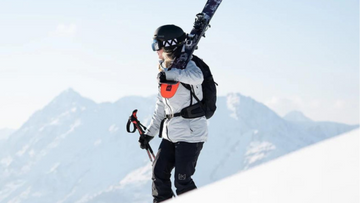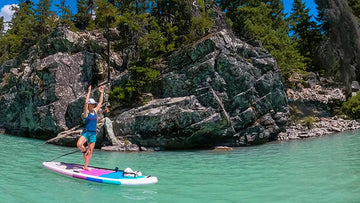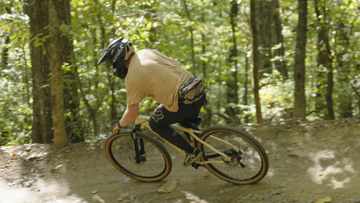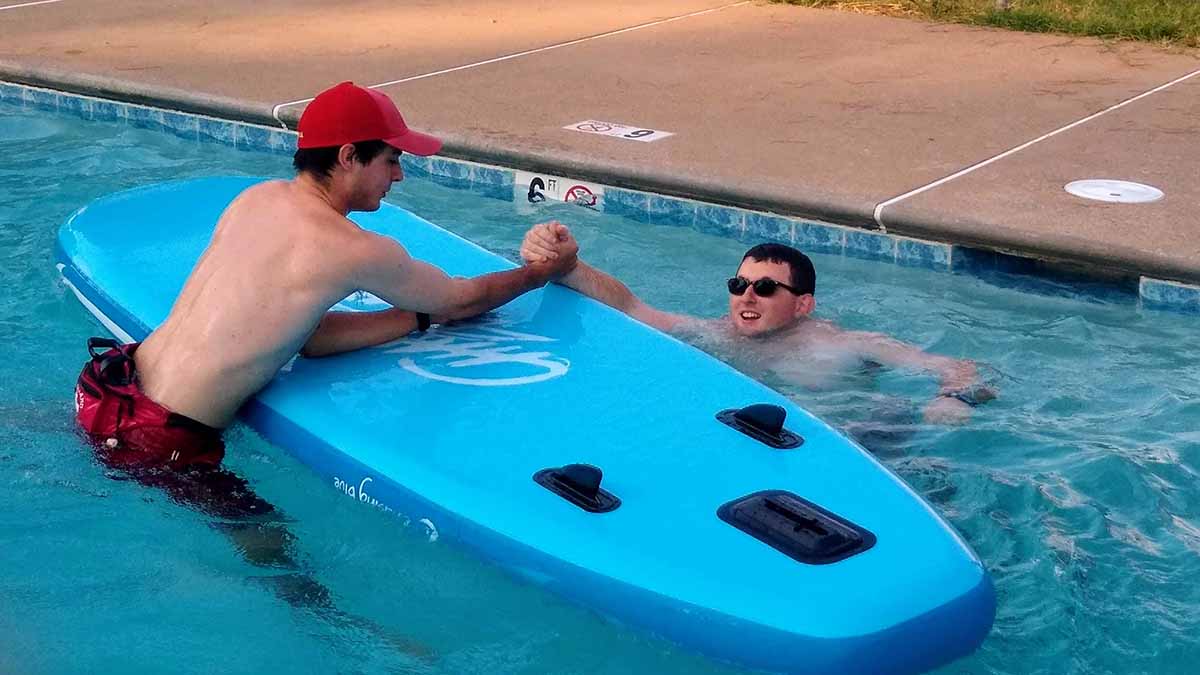
SUP Rescue
Kyle Silligman: Lifeguard on a SUP
Lifeguards have a critical role to play in the safety of an aquatic environment, especially in open water.
I've been a Lifeguard for 8 years now and I have had the opportunity to use a menagerie of rescue equipment. Whether in training or active responses, no tool in a lifeguard's bag is better for open water than a Stand Up Paddleboard (Okay, maybe a jet ski like you see in oceans or on Baywatch..but aside from that definitely a SUP).
Now through personal experience as a Lifeguard and Waterfront Director for summer camps in California and West Virginia, I've spent a lot of time watching people on lakes, ponds, and rivers.
As lifeguards, we like to follow the 10-20 rule:
10 seconds to recognize an issue.
20 seconds to respond and reach the individual in need.
Because of this, sometimes the distance is too great to make a timely response without assistance. This is where paddle boards step in.
Table of content
3 ways that SUPs can help your Rescue Team Picking the Correct Board for SUP Rescue Final Tips for Rescuing on a SUP3 ways that SUPs can help your Rescue Team:

Rescue
It might not be that big of a surprise but yes, you can rescue someone in trouble with a SUP!
There are a few tricks that can be used and it varies based on the situation. If you need a quick response, lay on the sup and paddle with your hands to get to the victim quickly.
This helps improve your response time while conserving energy that would otherwise be used to swim out to them.
From there, if they are tired, just let them hold onto the side and paddle back to shore. The most important part here is not to let them climb on the board with you.
Just tow them until they can stand or are ready to swim again.
As a bonus, if they are aggressive or panicking, the board acts as a buffer between you and the victim…believe it or not,
lifeguards tend to get hit if they are too close to a panicking swimmer.
If you have multiple victims, the large size of a board means you can have multiple people hold on. If they are fighting, you can separate them thanks to the wide base.
Now if they are unconscious, we can use the double roll technique to place someone on the board and position them so we can swim them to shore. You can check out the full video where I demonstrate this technique here:
Now if the person you are assisting also has a SUP there are a few things to remember.
1) They are still attached to the board via the ankle leash. Don't worry about it unless it gets tangled; try and remove it.
2) Equipment can always be replaced, so if you have to ditch one board and only use one to tow them back…DO IT! and
3) Remember you also have an ankle leash, it might also get tangled and create more drag when swimming them back. I personally tend to remove the leash on the way out to the victim.
Floating Dock
This is an easy trick for large lakes that I have used. Place one of the guards on a paddle board and have them float out to the middle of the lake. This makes for a shorter response time than having to swim from shore every time someone needs help.
Gear Transportation

Who said you have to carry victims only? I’ve used a SUP to collect gear after a rescue that is floating away. One time, I remember a friend paddling out to me just to fill my Water bottle since I was floating in the middle.
Another use could be swimming out rescue gear for non-emergency issues, such as the first aid kit for the kid who scratched their knee on the island in the middle of the lake.
Picking the Correct Board for SUP Rescue
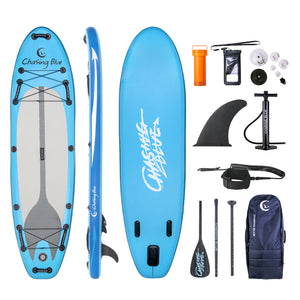
OCEAN SPIRIT - ALL ROUND iSUP BOARD
10'6" FOR ALL-LEVEL
Shop NowHaving the correct board for your needs is so important when using one as a rescue tool instead of a recreational toy. For the longest time,
I actually didn't like stand-up Paddleboards because I had only been on cheap hard plastic ones that were not designed for what I needed.
Then I tried out a few different Inflatable ones and ended up going with the OutdoorMaster Chasing Blue Ocean Spirit SUP to try out.
The grip, the handles, and mobile capabilities make it a must-have for all open water events and training.
It is durable, and lightweight with plenty of room for a second
person if I need to make a rescue.
One crucial factor was the length, 10-12 feet seems to be the best size range.
They are big enough to do everything I need, while also being maneuverable and
the removable fins allow for better tracking in the water.
Final Tips for Rescuing on a SUP
I could talk forever about how great these things are for Lifeguards, but my flight is getting ready to board and I must be off on another adventure. So I'll leave you with these quick tips.
-
Leave the ankle strap off – I never swim with this on if I'm making a rescue. It creates one less thing to get tangled up. The time to strap it on before you start cuts into the 20-second reaction time I aim for in an emergency.
-
When performing a Double Roll, If the person you helping has a lifejacket on and fitted properly, pull front the shoulder straps it's way easier, and I've always gotten a better grip than holding their hand/wrist.
-
Keep the paddleboard inflated correctly and have it ready to go. To be effective, the board needs to be ready to use. Occasionally check the pressure and add more as needed if it's out for a long time
-
Leave the paddle on shore and swim the board out. The paddle will only become one more thing to float away as it won't be used in any of the rescues I described
Now if you are interested in SUP rescue, feel free to join our dedicated SUP Facebook Group and meet Kyle Silligman there. He will be happy to answer your question!


